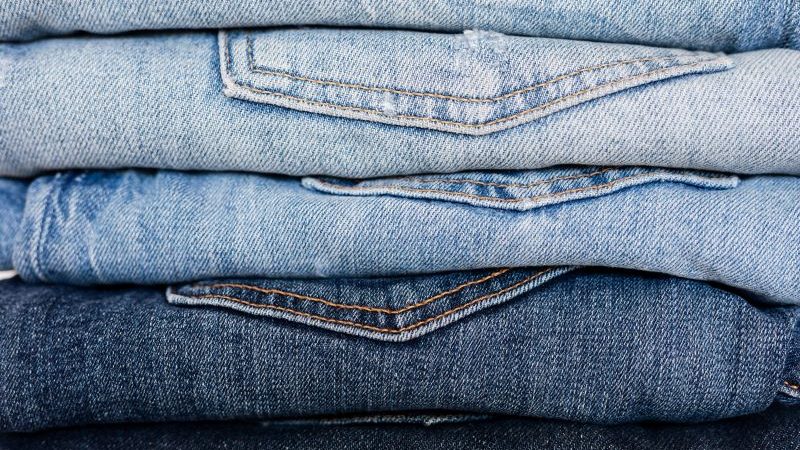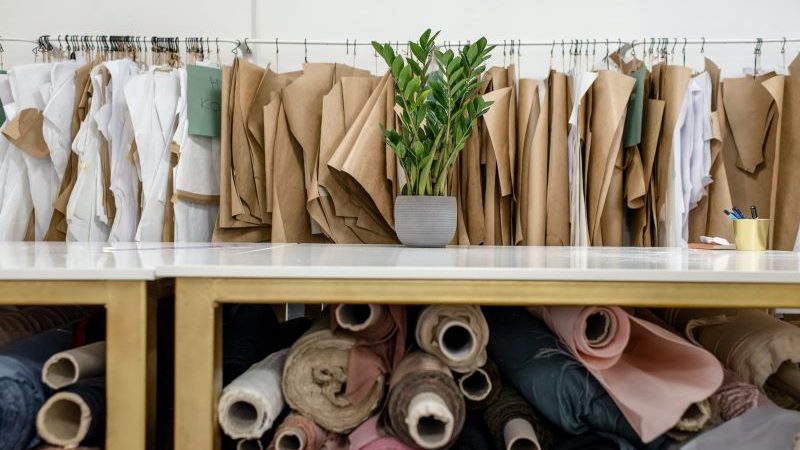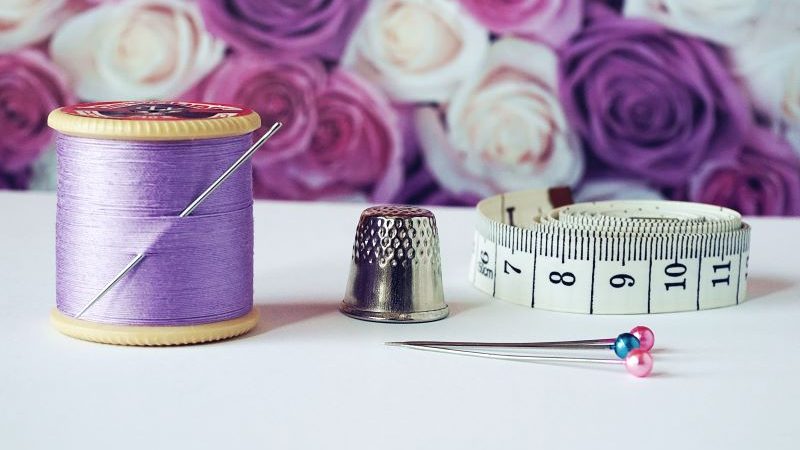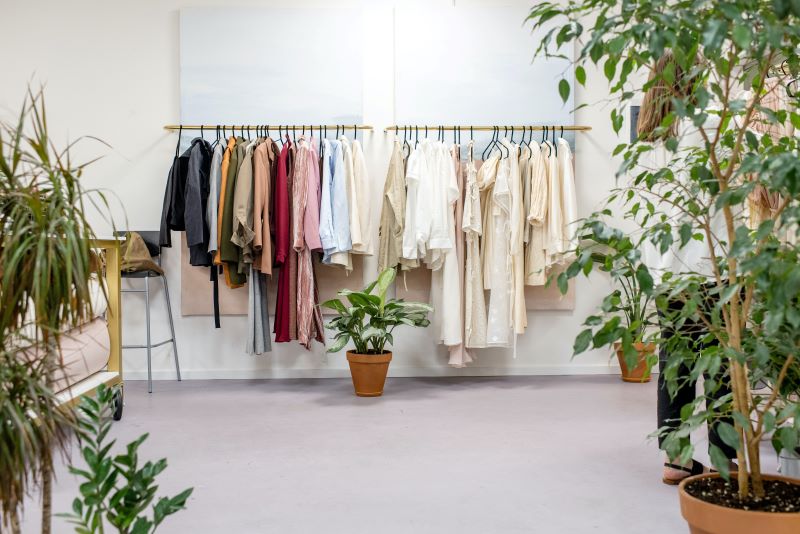Building a sustainable wardrobe is a goal we should all aspire to, but what exactly does that mean? We discuss what measures you might apply in choosing sustainable clothing . The final checklist should be one that you are happy with; one that meets your budget and style expectations as best as possible.
Updated April 2022
This post contains affiliate links. If you click on them and make a purchase we may earn a small commission which helps us keep the doors open. You will not pay any extra, but we will be very grateful.
What is sustainable fashion?
The answer to this is in many ways a personal one; we will each have things we will or won’t tolerate, and things we can or cannot financially afford. Some of the ways sustainability in fashion might be measured are explained below. But a word of caution, don’t get overwhelmed by ‘all the things to do’, it is well nigh impossible to be 100% sustainable in our current environment. But if each of us took one or two more steps towards a sustainable wardrobe that would make a significant difference. It would also have an impact on brands if they see us putting our money where our mouths are when purchasing clothes and accessories.
So let’s look at each area which can impact the sustainability of our wardrobes.
Sustainable fabrics – how do the fabrics in our wardrobes stack up

In many ways this can be the trickiest of all, as the meausures of fabric sustainability are many; from the fabric type, to its manufacture, to the use of dyes and their disposal, to the use of animal products, and other factors that may be of particular relevance to you. Add in climate requirements, like preferring natural fibres in hot climates, and it becomes a complex decision making process. But let’s try to break it down a little:
Linen
Linen is one of my favourite fabrics of all time because I love both the look and the feel of it, and I don’t fuss too much about the fact that it crushes. Linen is made from flax, a sustainable and renewal resource, and it is a great fabric to wear all year round. It uses less water to produce than does cotton, and when untreated it is fully biodegradable. But add in some of the dyes used and the situation becomes more complex. Still over and above many fabrics, linen is a great choice which is also strong and does not wear out quickly. I have a couple of pairs of linen pants which are well over 20 years old – that’s sustainable. A favourite linen brand, made ethically in Italy is Costa Vita Purolino. and another Australian label working with sustainable and ethically produced linen is Styling You The Label.
Cotton
Cotton is another favourite of mine, but one I am increasingly wary of due to the high use of water and of toxic chemicals during cotton growing. But there is increasiing availability of organic cotton, and that makes an excellent choice of fabric, particularly for our Australian summers. Cotton is a natural fibre with the potential to become highly sustainable, but if possible buy organic and not the cheap cotton tee shirts frequently available in chain stores. I have some lovely organic cotton pieces from CLE The Label, a great source for casual garments.
Wool
I grew up on a sheep farm and have a long love affair with wool, although these days it irritates my skin when worn close to my neck. If you are comfortable with products made from animal fleeces wool is a great choice with excellent thermal properties. It is of course renewable as the animal produces new fleece each year. But there are environmental concerns with wool too – sheep are ruminants which release methane gas, and their cloven hooves are known to damage the surface of the soil and lead to soil compaction.
Hemp
As a fabric hemp has had a bad rap due to typically being produced in bland colours and made up in grungy styles. Hemp is a highly sustainable fabric requiring very little water and returning nutrients to the soil it is grown in. But hamp isn’t always organic, so be aware of what you are purchasing if hemp is a fabric of your choice. And hemp definitely doesn’t have to be grungy and dull, it is increasingly available dyed in beautiful soft colours and used to produce stylish garments. Not often available in mainstream or chain stores, hemp is definitely a fabric to look out for.
Viscose
Viscose, also known as rayon, is a commonly available fabric in Australia and it, along with its cousin modal, is a semi synthetic fabric which is made from trees. But does that mke it sustainable? If we are cutting down old growth forests to replace them with fast growing trees like beech, then there are issues to consider in terms of indigenous forests vs commercial forests particularly in terms of the impact on native birds and animals. In addition, the processing of the wood pulp often uses a high level of chemicals. Some rayon is made from bamboo, which we will look at next.
Bamboo
The envitonmental credibility of bamboo very much depends on how it is processed and what the end product is, as well as how it is grown. Bamboo is a fast growing crop which requires less water and pesticides, which is a great start. But like all crops, there are considerations as to where it is grown and whether that is at the expense of native crops, grasses and trees. But compared to some other fabrics, bamboo scores well. However, when processed into bamboo viscose, as commonly available in Australia, that process is highly chemical dependent.
Silk
The luxury of silk is undeniable and if we can put aside the impact on the silk worms then it is a sustainable fabric choice. Silk is made from the inner cocoon of the silkworm and in the process the silkworm is killed; so from an animal welfare point of view it isn’t a great choice. The better news is that the pupae is edible, and a popular snack in China and so does not go to waste. LIke other materials it is the way the silk is processed that is important, so it pays to understand what happens in that process.
Polyester
Polyester is a completely man made fabric and as such does not harm animals and does not lead to land clearing. Having said that, polyester is a form of plastic and it is water thirsty in production and typically uses dyes which cannot decompose. It is true that some polyester is made from recycled plastic bottles, which is a good thing, but at the end of its life polyester does not decompose. In addition polyester can shed microfibres in the wash so choose a laundry bag which minimises shedding when laundering your polyester garments.
Summary and where to learn more

This isn’t an exhaustive list of fabrics, but I have focussed on those which are most commonly available in Australia. A really great resource which looks at a wide variety of fabrics is Good on You, I recommend it for more information than I have shared above. Here you will find details on where to buy sustainable clothing by knowing which brands for each fabric are the most sustainable
There’s more to sustainable fashion than the fabrics
If you are feeling defeated by the information above, take heart. No you don’t need to stop buying and wearing clothes. You can have a sustainable wardrobe which includes any of the fabrics above – yes even polyester. In fact I have several polyester garments in my wardrobe and I love them because they are easy care, perfect for travel and don’t need ironing. And I love denim, despite it being not the most sustainable fabric due to the dying process. But I wear my denim clothing for years and years and they are wardrobe basics for me.
But whilst we are talking about fabrics, did you know there is such a thing as deadstock fabric? Many large labels over order fabrics and when they don’t use them they are burnt rather than sold off at a discount. Does that not fill you with horror? These fabrics are what are known as dead stock and increasingly you will find other brands that choose to use deadstock fabric when they are able to access them. Some, not all, of the Australian brands using deadstock fabric are highlighted in this article. Another consideration is buying from brands like Styling You The Label which produce short runs of clothing with the aspiration that items sell out rather than being oversupplied.
Ways to make your existing wardrobe more sustainable
Buy better and buy less
Make conscious choices when selecting new items for your wardrobe. For every purchase make sure you can wear it with at least three other pieces. Start with wardrobe basics that can work hard for you, don’t be swayed by a wardrobe of seasonal high fashion pieces. The basics are the items that you wear on most days – for me that’s jeans and tops in the cooler months and dresses, skirts and shorts in warmer months. Consider too how each item might be stretched across seasons by adding layers and accessories. And buy the best quality you can afford, that way the items will have a long life and the cost per wear to you, and to the environment will be lowered.
Consider the garment care needs and follow the recommendations

Take good care of your garments to extend their lives. Where possible choose items with low care requirements; for example not needing dry cleaning, and follow the manufacturer’s instructions. Use laundry bags to protect your garments, and at the end of the wash cycle take them out and hang them, preferably on hangers (unless you are dealing with woollen or other garments that might stretch). Dry them naturally, either in the sun or on a drying rack – or I often hang things in our second bathroom to dry. Drying on hangers can minimise or negate the need for ironing or steaming garments, particularly if they haven’t been spun to bone dry. Not only do we love to mimimise ironing, it also is better for the environment.
Rethink buying the cheapest you can find
When you are tempted to buy that $20 tee shirt think about all the people involved in getting it into your hands. How much do you think each one made – the grower, the fabric wholesaler, the manufacturer, the maker, the marketer, the retailer, the shop assistant, the delivery companies? We all have a duty to end modern slavery and you can be sure that the cotton grower and the maker are paid a pittance for their contribution to that cheap item. If you really can’t afford a more expensive tee shirt then please consider shopping at your local op shop where you will almost certainly find better quality for a similar price. Consider too, wherever you can, buying Australian made garments. Our labour laws protect garment makers in a way that doesn’t happen in many parts of the world. And of course it is great for employment and the economy generally. A favourite Australian made brand is Styling You The Label, made in Sydney for a Brisbane based business.
Consider some second hand clothing in the mix
Op Shops in Australia have a very different offering than in past years. You will find garments are clean and well merchandised with lots of great pieces to choose from. Take the time to locate a couple close by that you like, and pop in regularly, particularly at the start of seasons. As well as op shops, you might like to investigate consignment stores that specialise in top quality and designer clothing and accesories. I have made many purchases in these stores; items that have stood the test of time from brands that I love. You might like to organise a swap with a friend or two – there are many ways to source pre-loved garments, including of course the online buy/swap/sell groups.
Get handy with your sewing machine or find a great seamstress

Before you throw out a garment or otherwise dismiss it from your wardrobe, consider how it might be upcycled or altered to better fit your requirements. For a small investment of time and/or money, a garment that looks just OK on can be transformed into a flattering piece that you reach for often.
Is slow fashion the only answer and how do we measure that?
Fast fashion is definitely a big part of the problem – brands that release new items on a weekly basis to lure you to buy more and more pieces. Often these are low quality and designed for a short life cycle too – don’t get me started on the arguments about tee shirts getting holes in them. Oh, you haven’t heard that one? It’s where you buy a cheap tee shirt, made in thin fabric, which quickly gets a hole, or several, in it. There was a period when the common reason given was that seat belts were wearing the holes. Hello what, your clothing isn’t actually fit for wear? Definitely a case of cheap not being cheerful.
Getting started on building a sustainable wardrobe
Take heart, there is much you can do to make your wardrobe more sustainable. It certainly doesn’t need to mean throwing everything out and starting again. However, I do recommend a regular wardrobe audit; twice a year works for me, where you take everything out and assess each piece. Look for pieces that need repairs or alterations and get them to your seamstress or sewing room. Rethink every piece and how you might change it up for a new look – accessories are a great way to do this, as is mixing and matching and layering. Work out if you have any wardrobe gaps – that will usually mean needing new basics like new tees or tops – and create a plan to fill those gaps in a thoughtful way, taking into account the information above. Have fun with your wardrobe with pieces that you love and feel happy wearing.Take small steps towards greater sustainability, I guarantee it will make you feel good.
Looking for more tips on how to build your wardrobe, read this post on your fashion for women over 60.




